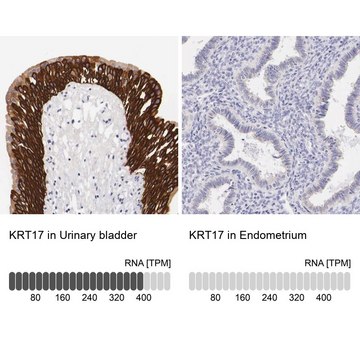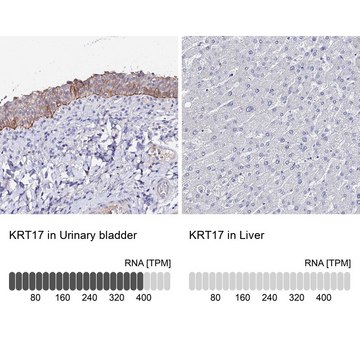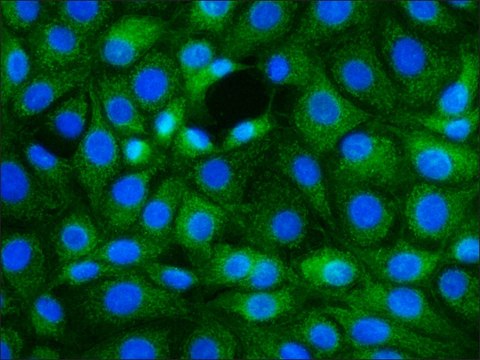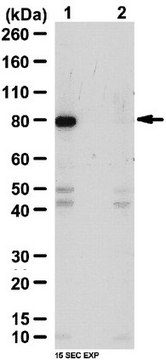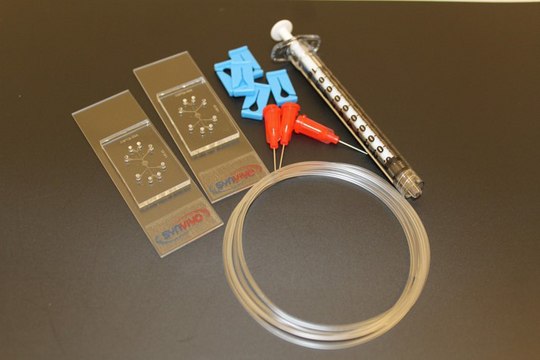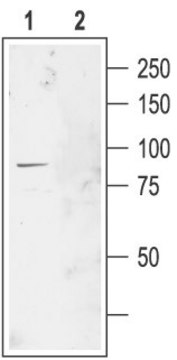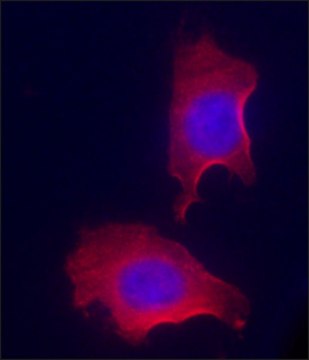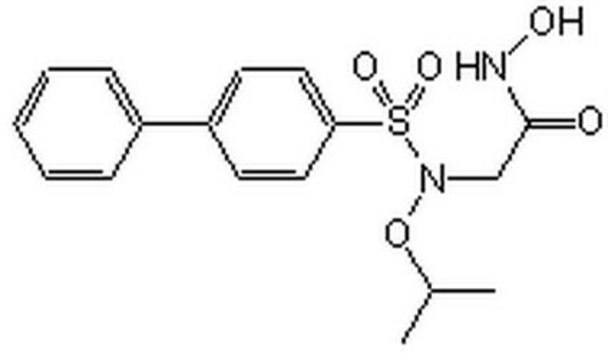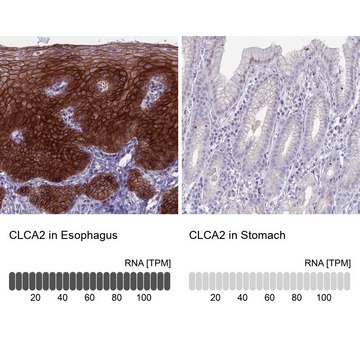C9179
Monoclonal Anti-Cytokeratin Peptide 17 antibody produced in mouse
clone CK-E3, ascites fluid
Sign Into View Organizational & Contract Pricing
All Photos(2)
About This Item
Recommended Products
biological source
mouse
conjugate
unconjugated
antibody form
ascites fluid
antibody product type
primary antibodies
clone
CK-E3, monoclonal
contains
15 mM sodium azide
species reactivity
rat, human, bovine, pig, goat
technique(s)
indirect immunofluorescence: 1:400 using acetone-fixed frozen sections of human salivary gland
microarray: suitable
western blot: suitable
isotype
IgG2b
UniProt accession no.
shipped in
dry ice
storage temp.
−20°C
target post-translational modification
unmodified
Gene Information
human ... KRT17(3872)
General description
Cytokeratin 17, with a molecular weight of 46 kDa, is a member of the type I acidic subfamily of cytokeratins that is expressed in normal human epithelial tissues such as glandular epithelium with myoepithelial component, transitional and pseudostratified epithelia. This protein may be involved in the generation of spatial organization of epithelial tissues.
Specificity
Recognizes specifically human cytokeratin 17 (46-47 kDa) and rat cytokeratin 19 (40 kDa). The antibody labels intermediate filaments in human cultured epitheloid carcinoma cell line (HeLa) and in rat hepatoma cells, but does not stain rat fibroblasts in primary cultures. It stains a minor basal cell population in all variants of complex epithelia; strong staining was noted in myoepithelial cells of all glands studied. The antibody exhibits a wide interspecies cross-reactivity, however, the recognized cytokeratin was not studied in cases other than human and rat. The epitope detected by the antibody is sensitive to formalin fixation.
Immunogen
cytoskeletal preparation from rat colon epithelium.
Application
Applications in which this antibody has been used successfully, and the associated peer-reviewed papers, are given below.
Immunohistochemistry (1 paper)
Immunohistochemistry (1 paper)
Monoclonal Anti-Cytokeratin Peptide 17 antibody produced in mouse is suitable for western blotting, microarray and indirect immunofluorescence at a working dilution of 1:400 using acetone-fixed frozen sections of human salivary gland. It recognizes an epitope present in epithelial tissues and may be used for typing of normal, metaplastic and neoplastic cells. It may be useful in the discrimination of carcinomas and non-epithelial tumors such as sarcomas, lymphomas and neural tumors. It may also be used for the localization of cytokeratin 17 using various immunochemical assays such as dot blotting and immunohistochemistry. It has been used in the detection of expression of inducible keratin k17 in human keratinocytes in pachyonychia congenita patients.
Disclaimer
Unless otherwise stated in our catalog or other company documentation accompanying the product(s), our products are intended for research use only and are not to be used for any other purpose, which includes but is not limited to, unauthorized commercial uses, in vitro diagnostic uses, ex vivo or in vivo therapeutic uses or any type of consumption or application to humans or animals.
Not finding the right product?
Try our Product Selector Tool.
Storage Class Code
10 - Combustible liquids
WGK
nwg
Flash Point(F)
Not applicable
Flash Point(C)
Not applicable
Regulatory Information
新产品
Choose from one of the most recent versions:
Already Own This Product?
Find documentation for the products that you have recently purchased in the Document Library.
Paul E Bowden et al.
Veterinary dermatology, 20(5-6), 347-359 (2010-02-25)
Canine claws are complex epithelial structures resembling the mammalian hair fibre, and human nail plate, in terms of tissue-specific differentiation. They are composed of several distinct epithelial cell lineages undergoing either hard or soft keratinization. The claw plate has three
John A Wisler et al.
Toxicologic pathology, 39(5), 809-822 (2011-06-17)
Seven novel and potent Raf small molecule kinase inhibitors (C1-7) were evaluated in seven-day oral repeat dose rat toxicity studies. All compounds tested induced hyperplasia in multiple tissues. Consistently affected was stratified squamous epithelium at a number of sites and
In vitro differentiation of human tooth germ stem cells into endothelial- and epithelial-like cells.
Ayşegül Doğan et al.
Cell biology international, 39(1), 94-103 (2014-08-01)
Current clinical techniques in dental practice include stem cell and tissue engineering applications. Dental stem cells are promising primary cell source for mainly tooth tissue engineering. Interaction of mesenchymal stem cell with epithelial and endothelial cells is strictly required for
S M Troyanovsky et al.
Journal of cell science, 93 ( Pt 3), 419-426 (1989-07-01)
By immunomorphology, using keratin 17-specific monoclonal antibody, it has been shown that this keratin is expressed only in the basal cells of a group of complex epithelia: glandular epithelium with myoepithelial component, transitional and pseudostratified epithelia. Immunolocalization of keratin 17
Robyn P Hickerson et al.
Journal of dermatological science, 56(2), 82-88 (2009-08-25)
The macrolide sirolimus (rapamycin) selectively blocks translation of mRNAs containing a terminal 5' oligopyrimidine (TOP) tract by altering the activity of mammalian target of rapamycin (mTOR) and inhibiting downstream mTOR pathway components involved in TOP mRNA translation. The skin disorder
Our team of scientists has experience in all areas of research including Life Science, Material Science, Chemical Synthesis, Chromatography, Analytical and many others.
Contact Technical Service